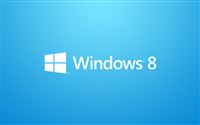 As I rebuilt the server a while ago, I started thinking back to all the computers that I’ve ever own. Here’s my attempt to list them out along with estimated prices. This should be good for a laugh in 20 years. Aside from the first computer, none of these prices include monitors. This list only includes computers that I purchased new, not used ones I bought or was given.
As I rebuilt the server a while ago, I started thinking back to all the computers that I’ve ever own. Here’s my attempt to list them out along with estimated prices. This should be good for a laugh in 20 years. Aside from the first computer, none of these prices include monitors. This list only includes computers that I purchased new, not used ones I bought or was given.
- 1998 – Gateway Pentium 2 350 with a 10GB hard drive and a tape backup.
- I bought this when I was heading off to college. I don’t remember the exact price but it was somewhere between $2000 and $2500 which was pretty much all the money I had left. It lasted me all the way through college though.
- 2002 – Dell P4 2.4GHz with 512MB RAM and an 80GB hard drive. $900
- 2006 – Dell Core 2 Duo E6600 2.4GHz with 2GB RAM and a 250GB hard drive. $1200
- This one is still in use 8 years later! It’s running Windows Media Center 24/7. It can record 4 HD video streams and serve them simultaneously to the three XBox360s around the house. One wall of the case is a cardboard beer box, but this thing still runs like a champ.
- 2010 – Core i7 860 2.8GHz quad core with 8 GB RAM. $1000
- This was the first computer that I built on my own. It became my file server and is the machine that had the CPU and motherboard replaced earlier this month.
- 2011 – Lenovo Thinkpad Edge $700
- I can’t find any info about this, but it was the first laptop we bought for Tyla after we got married.
- 2012 – Core i7 3770 3.4GHz quad core with 16GB RAM. $1400
- While I retrofitted the 2006 and 2010 computers with SSDs, this was the first one that started life with an SSD in it.
- 2013 – HP Pavilion Touchsmart 15-b154nr AMD A8-4555M quad core 1.6GHZ and 6 GB of RAM. $550
- Though I had used many laptops from work, this was the first one I ever paid for. We got it for Tyla when her previous laptop died a surprisingly early death.
This last desktop computer from 2012 is still plenty fast and I would be very hard pressed to find any excuse to update it. Maybe once we start seeing 8 core CPUs then I’ll make the jump.
Our current laptop (the HP), on the other hand, has been a pretty big disappointment. It’s my fault for being cheap. I bought the most inexpensive laptop with a touchscreen that I could find and yikes, it’s not great. The biggest flaw is the 5400 rpm hard drive that you can’t replace without tearing apart the entire machine. If I could just put an SSD into it, it would probably be fine, but I’m not very confident that I’d ever get the machine physically back in one piece after installing it. We’re trying to eek out two years with it but hopefully it will be replaced soon and I will not be going cheap.
It’s fun to look back at the performance/price ratio even in just 16 years. Moore’s Law is alive and well!
[UPDATE] Changed Murphy’s to Moore’s. Thanks Jim. Although accidentally typing Murphy’s makes it a true statement as well.

 I wrote previously about my
I wrote previously about my  I came home the other night and found out that I had a dead hard drive on my main file server. D’oh! That machine carries every one of our photos since we got a digital camera and a ton of the print photos from early in our childhood. It’s irreplaceable!
I came home the other night and found out that I had a dead hard drive on my main file server. D’oh! That machine carries every one of our photos since we got a digital camera and a ton of the print photos from early in our childhood. It’s irreplaceable! If your computer is acting weird, slow or you suspect a virus, Windows 8 has two great new features that will help you get back to normal again.
If your computer is acting weird, slow or you suspect a virus, Windows 8 has two great new features that will help you get back to normal again. I’ve written a couple times before about my Power BI project at work. The head of our group gave a presentation at the Worldwide Partner Conference that provides a nice overview of our future roadmap. To view it, go the
I’ve written a couple times before about my Power BI project at work. The head of our group gave a presentation at the Worldwide Partner Conference that provides a nice overview of our future roadmap. To view it, go the  Last November, I posted that I was
Last November, I posted that I was  I’ve been posting lots of quick, little examples showing off pieces of our Power BI offering, but now I’ve got a huge one for you. Our team recently acquired access to a HUGE data set of statistics. With the World Cup starting up, we decided to use World Cup statistics for a great demo.
I’ve been posting lots of quick, little examples showing off pieces of our Power BI offering, but now I’ve got a huge one for you. Our team recently acquired access to a HUGE data set of statistics. With the World Cup starting up, we decided to use World Cup statistics for a great demo.